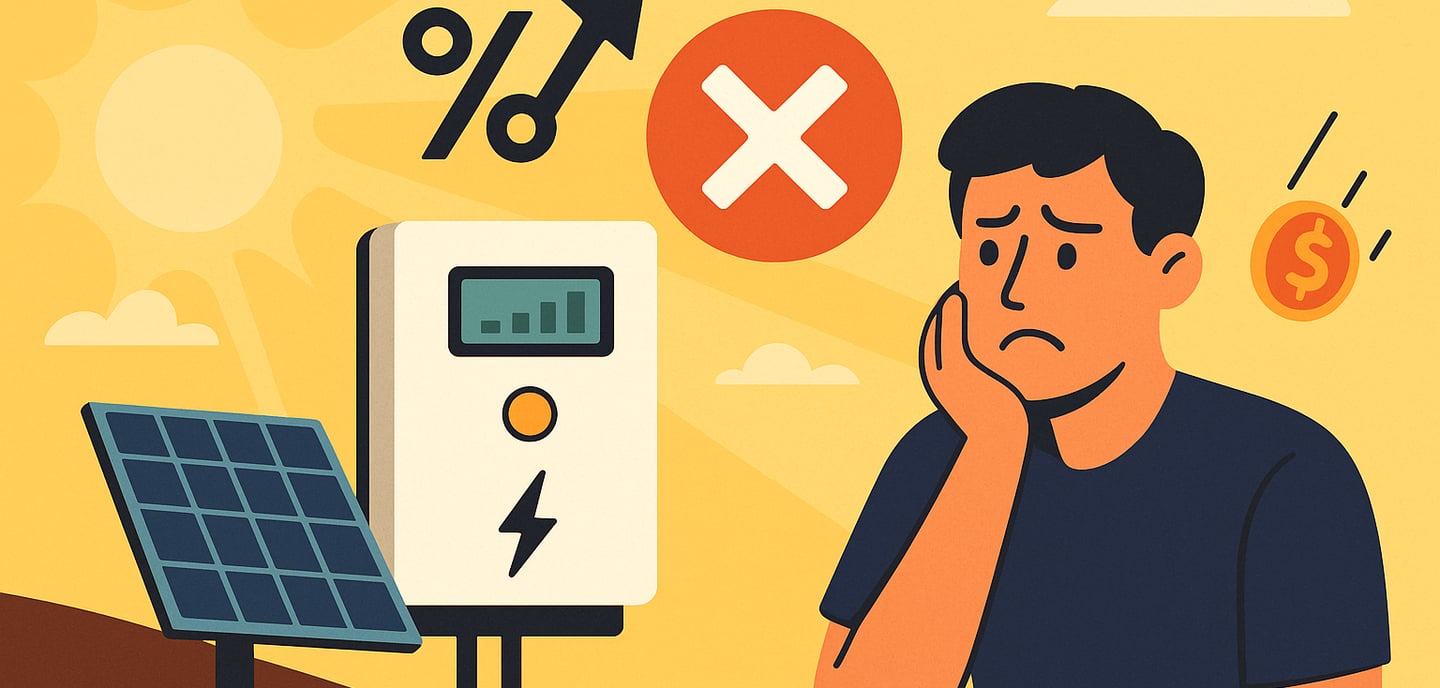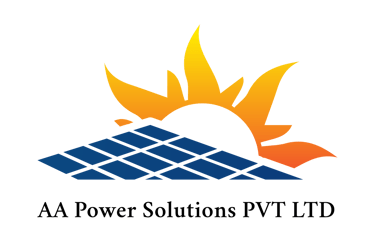Why You Shouldn’t Buy a Solar Inverter on Installment (2025)
Avoid hidden markups and delayed ROI. Learn why buying a solar inverter on installment in Pakistan costs more in 2025, and what to do instead.
Muhammad Ali
11/7/20253 min read


Why You Shouldn’t Buy A Solar Inverter On Installment
Buying a solar inverter in 2025 can be one of the smartest investments for Pakistani homeowners yet, choosing to pay on installments may secretly drain your savings.
As energy prices rise and solar adoption expands, thousands of families are tempted by “easy monthly payments.” However, these plans often add hidden mark-ups, delay your return on investment, and tie you to outdated technology.
This guide explains why not to buy a solar inverter on installment, using data, examples, and real market trends from 2025 to help you make a truly informed choice.
Key Statistics On Solar Inverter Installments (2025)
In early 2025, solar farms generated ≈ 25.3% of Pakistan’s utility electricity. Arab News+1
As of April 2025, Pakistan’s net-metering capacity reached 5.3 GW. pv magazine International+1
Pakistan’s net-metered on-grid solar capacity reached about 4.1 GW by December 2024. pv magazine International+1
The solar inverter market in Pakistan is projected to reach annual sales of ≈ 650 MW by 2025. Neexgent
Pakistan imported 17 GW of solar panels in 2024 — more than double the previous year. The Express Tribune+1
The Pakistan solar-energy market size is expected to be ≈ 2.07 GW in 2025, with a forecast growth to ~13.97 GW by 2030. Mordor Intelligence
Bank loans for solar financing in Pakistan offer terms at ~17-23% interest rates (for 5-7 year loans) as of 2025. approachpakistan.com
Why Avoid Buying A Solar Inverter On Installments?
Buying a solar inverter on installments typically increases your total cost, delays your ROI, and limits your flexibility.
Hidden Mark-Up And Interest Inflate Cost
Vendors advertise “0 % down” plans, but:
The base solar inverter price is often higher for installment buyers.
Monthly fees and processing charges accumulate.
Your return on investment slows as you pay interest.
Example:
A 5 kW Inverex inverter priced at PKR 200,000 cash may cost PKR 220,000 on a 12-month plan (+10 %). That extra 20 K adds a full month to your payback timeline.
Depreciation And Technology Obsolescence
Solar inverter technology evolves rapidly. Paying in installments may trap you with an older model while hybrid systems advance.
Example:
A 3 kW hybrid solar system with battery ≈ PKR 394,000 (2025) vs ≈ PKR 310,000 for a non-battery system.
If you’re locked into installments for a basic on-grid model, you lose the chance to upgrade cost-effectively.
Warranty And Service Risk
Missed payments can void warranty or support.
Some vendors link warranty activation to full payment.
If a brand exits the market, installment buyers may lose coverage.
Local players like Inverex have broader service networks than imported brands like Tesla Solar. But markup and currency risk for imports are higher.
Psychological And Behavioural Cost
Installments feel “affordable,” but they encourage short-term thinking:
Buyers under-estimate future payments and penalties.
They delay upgrades or maintenance.
They focus on “monthly affordability” instead of lifetime value.
Installment plans create a false sense of affordability that erodes long-term savings.
Which Brands And Models Are Worth Comparing In 2025?
Compare upfront price, efficiency, warranty, and service network before considering installments.
How Installment Financing Affects Roi And Payback
The longer you pay, the slower you save, interest and fees eat into your energy returns.
Scenario A – Cash Purchase
Cost: PKR 220,000
Annual savings: PKR 40,000
Payback: ≈ 5.5 years
Scenario B – Installment Purchase
Cost: PKR 240,000 (+ markup and fees)
Annual savings same, but ROI delayed
Payback: ≈ 6.5 years or more
Cash buyers start saving immediately; installment buyers lose that compounding advantage.
What You Should Do Instead
Pay cash or use short-term financing to retain control and maximize returns.
Budget for cash purchase if possible.
Compare total price, not monthly installments.
Verify service network and after-sales support.
Choose hybrid or future-ready models for long-term value.
Avoid plans longer than 24 months.
Recalculate your payback period yearly.
According to Apex Solar (2025), most buyers still make the mistake of choosing price over performance — leading to losses within five years.
Conclusion
Buying a solar inverter on installments may look easy, but hidden mark-ups, interest, and delayed returns turn it into a poor investment. A cash purchase, or short, transparent financing, lets you save earlier and upgrade smarter. In 2025, focus on total cost, service quality, and payback timeline to make your solar decision truly profitable. Visit AAPowersolutions website!
Frequently Asked Questions
Can I Buy A Solar Inverter On Installment If I Lack Cash?
Yes, but compare total cost and ensure the payback period stays under 7 years.
What Is The Average Price Of A 5 Kw Solar Inverter In Pakistan (2025)?
PKR 180,000 – 220,000 for cash; installments can add 10 – 20 %.
Do Installments Affect Warranty?
Sometimes. Some vendors delay warranty activation until full payment is complete.
Is Cash Always Better?
Generally yes for lower total cost and greater flexibility. Short-term low-interest plans can work if monitored.
Which Brands To Consider In 2025?
Local Inverex for affordability and service; imported Tesla Solar for efficiency but higher risk.
How Do Installments Delay Payback?
They increase total cost and defer savings, pushing break-even by 12–24 months.
Does Technology Choice Matter?
Yes. Hybrid inverters with battery support have longer life and reduce future upgrade expenses.
Trusted solar solutions for home and business.
Contact information
Reach out to us
info@aapowersolution.com
03342244945
03215435359
AAPowerSolutions © 2025. All rights reserved.


Authorized Dealers for


and
Shop # 9 Prime Square Market Railway Road Jhelum
Our Services
Installation
Maintenance
Panel Cleaning
More AA
Jhelum Branch
islamabad Branch
Coming Soon
Lahore Branch
Coming Soon
